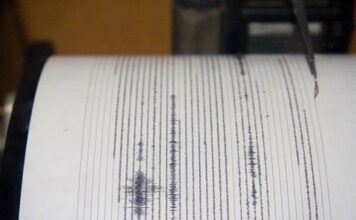Several months ago I wrote about some of the common stars
visible in the winter sky. At that time, I mentioned a couple nice
features of observing the night sky; the stars don’t run away like
startled animals, and they are visible from anywhere, including
your backyard, and not just in some far-off exotic location.
Several months ago I wrote about some of the common stars visible in the winter sky. At that time, I mentioned a couple nice features of observing the night sky; the stars don’t run away like startled animals, and they are visible from anywhere, including your backyard, and not just in some far-off exotic location.
I overlooked one other convenient feature of star watching. Like a touring Broadway show that visits the Bay Area, after a few months the attraction changes. The winter stars are still up there, but now they are overhead during your lunch break. They were around for a three-month run, but have now left town for a new attraction – the summer stars.
The dominant feature of the summer sky is the Summer Triangle. Look directly overhead for Vega, Deneb and Altair that form the triangle. They are distinctly brighter than anything in the vicinity. If you don’t see it, start at the Big Dipper and draw a line from the bottom of the dipper on the handle side through the top of the dipper (also on the handle side) and follow it 60 degrees (six clenched fists held at arms length) to a point between Vega and Deneb. A little further down a similar line you will see Altair that completes the triangle.
Not many of the features in the night sky look like the thing they are named for, but Deneb is at the top of the Northern Cross that can be recognized with only a little effort. The Northern Cross is actually the constellation Cygnus, a swan in flight with Deneb as the tail, the arms of the cross are the wings, and the shaft of the cross is the swans extended neck. One of the most powerful stars in the galaxy, Deneb is 60,000 times brighter than our sun.
Arcturus is the fourth brightest star in the heavens and can be easily located using the Big Dipper. Follow the arcing line of the handle about 30 degrees (arc to Arcturus) to the only bright star in the region.
Two more interesting constellations that rest just above the southern horizon are Scorpius and Sagittarius. The path to Antares, a reddish colored star and the brightest star in Scorpius, can be found if you start at Deneb in the Summer Triangle and follow the shaft of the Northern Cross 80 degrees. Scorpius is another of the handful of constellations that looks like what it is named for – a scorpion. You may need the help of a star guide, but see if you can follow a line of stars that drops down toward the horizon from Antares and resembles the long arcing stinger of a scorpion.
Once again, you may need the help of a star guide, but look to the left of Scorpius for a clear teapot shaped constellation, Sagittarius. The handle is to the left and the spout is to the right. Right next to the tip of the teapot spout is the very center of our galaxy and the densest part of the Milky Way.
City lights wash out the true brilliance of the Milky Way, but this is the time of year that we are looking at it brightest part. You can find the Milky Way by following a line from the northeast to the southwest through the Summer Triangle and down toward Scorpius and Sagittarius.
On one of our warm summer evenings, grab the binoculars, recline on the chaise lounge in the backyard and slowly scan through the Milky Way. Even through the city lights, there are jewels aplenty to be seen.












